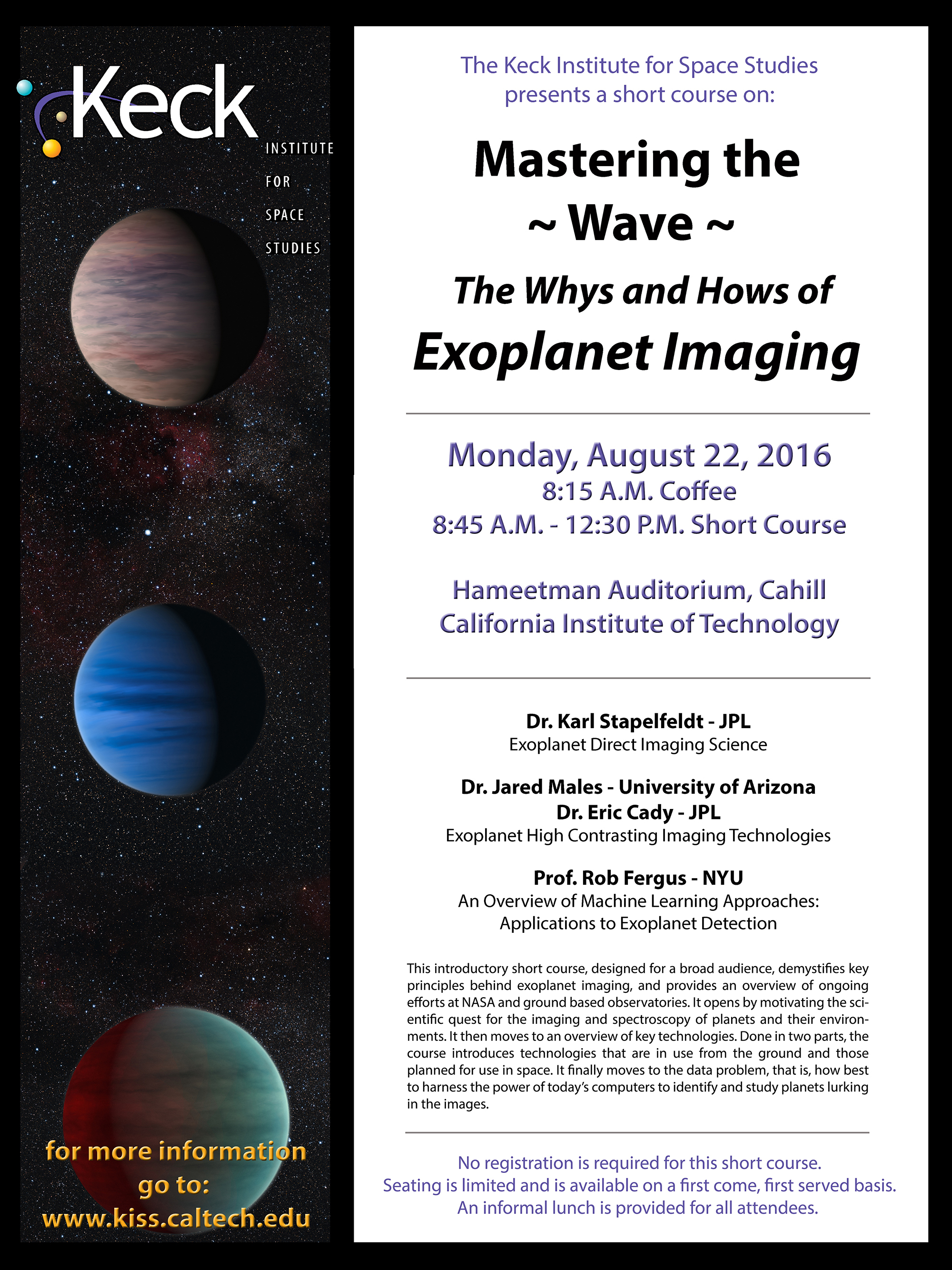Short Course: Mastering the Wave - The Whys and Hows of Exoplanet Imaging
Monday, August 22, 2016
8:15 A.M. Coffee
8:45 A.M. - 12:30 P.M. Short Course
Hameetman Auditorium, Cahill Building- California Institute of Technology

Speakers:
- Dr. Karl Stapelfeldt (JPL) - "Exoplanet Direct Imaging Science"
- Dr. Jared Males (University of Arizona) and Dr. Eric Cady (JPL) - "Exoplanet High Contrasting Imaging Technologies"
- Prof. Rob Fergus (NYU) - "An Overview of Machine Learning Approaches: Applications to Exoplanet Detection"
Abstract:
The essence of imaging faint planets lies in controlling and canceling light waves from the parent star to great precision. This is a challenging problem, regardless of whether it is attempted through the Earth’s turbulent atmosphere or from the serenity of space. This is an exciting time, as the first dedicated planet imagers hunt for giant planets using the world’s largest telescopes, and as NASA plans ambitious missions in search of bona fide earth twins.
This introductory short course, designed for a broad audience, demystifies key principles behind exoplanet imaging, and provides an overview of ongoing efforts at NASA and ground based observatories. It opens by motivating the scientific quest for the imaging and spectroscopy of planets and their environments. It then moves to an overview of key technologies. Done in two parts, the course introduces technologies that are in use from the ground and those planned for use in space. It finally moves to the data problem, that is, how best to harness the power of today’s computers to identify and study planets lurking in the images.
This course is open to all interested students, researchers and faculty from Campus and JPL and any other local research institutions.
Short Course Presentations |
|
|
Karl Stapelfeldt JPL |
Exoplanet Direct Imaging Science (13.2 MB .pdf) |
| Jared Males University of Arizona |
Exoplanet High Contrast Imaging Technologies Ground (2.7 MB .pdf) |
| Eric Cady JPL |
Exoplanet High Contrast Imaging: Space (2.5 MB .pdf) |
| Rob Fergus NYU |
Machine Learning for Astronomy (4.6 MB .pdf) |